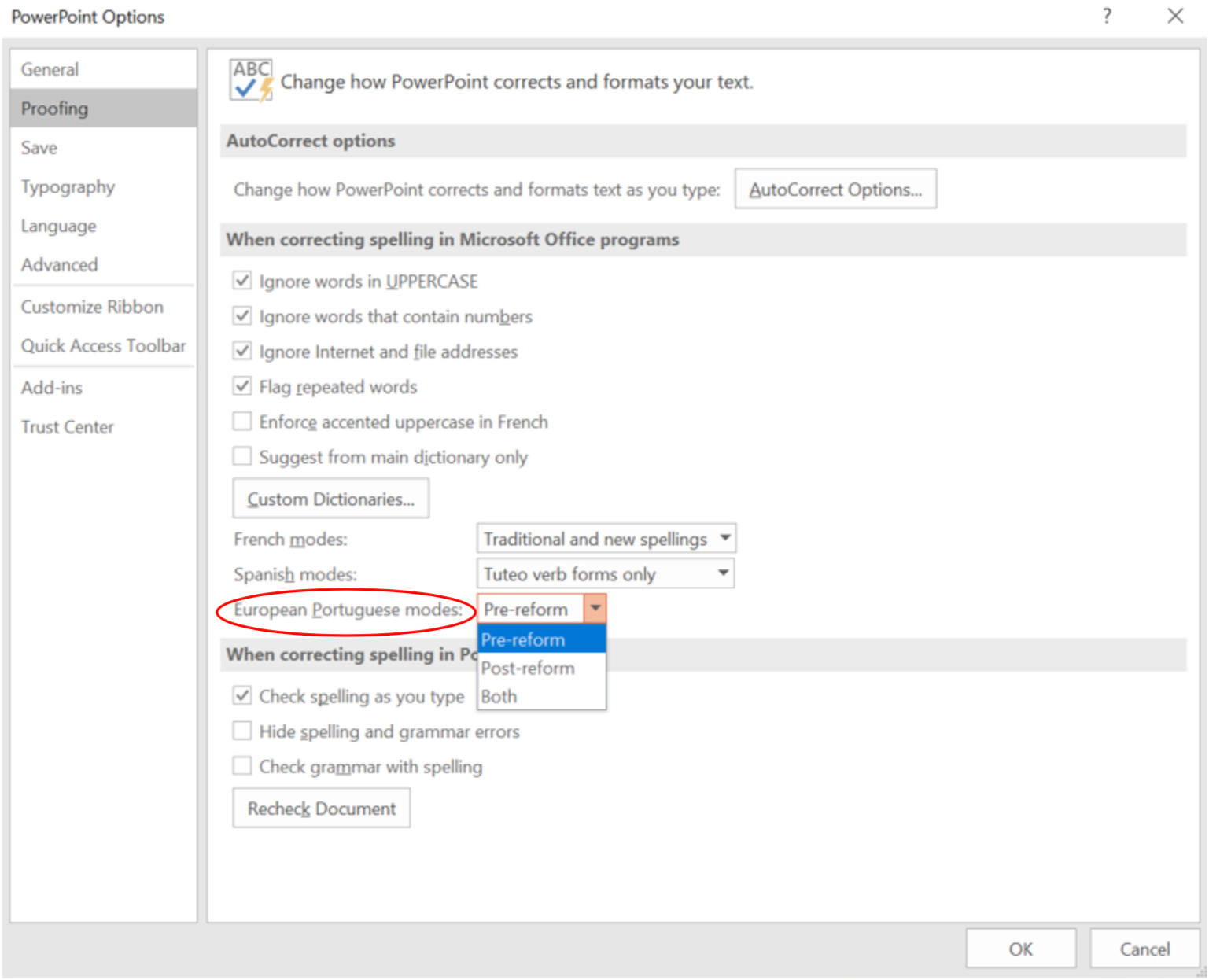Macao has long positioned itself as a platform between China and the Portuguese-speaking countries, and Portuguese is an official language of the Macao SAR. It is little wonder that every day a tremendous amount of written material is produced in Macao using Portuguese.
Portuguese orthography has undergone significant changes in recent years. A 1990 agreement to standardise the spelling of words in all Portuguese-speaking countries has begun to be followed more widely by entities that include the Government of Portugal.
Two spelling forms co-exist: one form follows a 1945 accord; while the newest form, set by the 1990 agreement, is meant to replace the 1945 form. The 1945 form is known as AO1945 and the 1990 version as AO1990, AO being the Portuguese acronym for ‘acordo ortográfico’, or orthographic agreement. Each form is intelligible to users of the other.
Portuguese spelling examples
| AO1945 (pre-reform) | AO1990 (post-reform) |
| Janeiro | janeiro |
| auto-estrada | autoestrada |
| director; recepcionista; direcção | diretor; rececionista; direção |
| fim-de-semana | fim de semana |
Before Chinese rule resumed in Macao in 1999, the Portuguese administration of the city followed AO1945. The Macao SAR Government continues to follow AO1945, as provided for by Decree-Law No. 103/99/M.
Even so, with increasing interaction between education administrators, civil servants and instructors in Macao and the Portuguese-speaking countries, it is likely that many in Macao feel the need to use AO1990 for email, printed brochures, agreements and training materials written in Portuguese for parties outside Macao. The Portuguese-speaking countries include Angola, Brazil, Cape Verde, Guinea-Bissau, Mozambique, Portugal, Sao Tomé and Principe, and East Timor.
The Microsoft Office suite offers a simple way for users to spellcheck text written in Portuguese against the spellings given in dictionaries of both forms.
Users can go to https://support.office.com/en-us/article/Language-Accessory-Pack-for-Office-82ee1236-0f9a-45ee-9c72-05b026ee809f to download and install the “Portuguese (Portugal)” language pack. On running any of the Microsoft Office programs – including Word, PowerPoint and Outlook – it is easy to check the spelling form being used. Go to the “File” menu, choose “Options” and then “Proofing”.

If the material is meant for readers in Macao, users should choose “Pre-reform” in the “European Portuguese modes” selection box (pictured). This should be the case for most material produced by the Macao public sector.
If users need to communicate continually with people of the Portuguese-speaking countries, they should choose “Both” in the “European Portuguese modes” selection box. The spellchecker will then recognise and accept both AO1945 and AO1990.
Be aware that changing the mode in the “European Portuguese modes” selection box applies the mode chosen to the entire document and all installed Microsoft Office programs – not just to any text selected.
Have fun or, as they say in Portuguese, divirtam-se!
By IFT Lecturer Simon Lei









